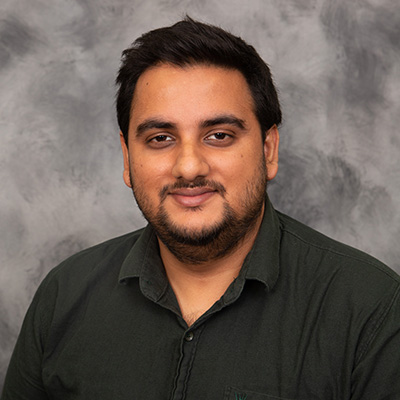Center for Pre-Clinical Cancer Research
The LSU School of Veterinary Medicine received an $11 million grant to establish a Center of Biomedical Research Excellence (COBRE). The COBRE funds will create the Center for Pre-Clinical Cancer Research (Cancer COBRE), which will be based at the LSU SVM. This grant will last for five years and can be renewed for five or more years. The total amount awarded is $11,027,290.
The Cancer COBRE will establish a new specialized core facility, Pre-Clinical Evaluation Core (PCEC), to provide scientific expertise and technical support for the cancer projects as well as to all LSU researchers. To accomplish this approach, advanced 3D cancer cell culture systems (spheroids) will provide critical translational information.
The Cancer COBRE will enhance cancer research both at LSU and at Southern University, strengthen collaborative research efforts with LSU HSC-New Orleans, and aid in efforts to establish a National Cancer Institute (NCI)-designated Cancer Center in Louisiana.
The Cancer COBRE aims to identify clinically relevant mechanisms of human cancer using models that closely reflect the disease state in the context of the tumor microenvironment to reveal insights into tumorigenesis and thus drive novel therapeutic discovery. The Cancer COBRE junior investigators will address devastating and/or chronic human diseases that exhibit poor outcomes in patients and for which there are unmet therapeutic needs. The four cancer projects feature osteosarcoma, breast cancer, liver cancer, and prostate cancer as diseases that would benefit from pre-clinical models that are more predictive of mechanistic efficacy in humans and animals. Advanced pre-clinical evaluation capability at LSU will provide exceptional training and mentoring to research scientists, including PJIs, graduate students, and postdocs.
Download the Request for Applications (RFA): Link
About CPCCR
The Center for Pre-clinical Cancer Research will provide a focused pre-clinical and translational approach using in vivo models and in vitro 3D modeling to promote cancer research efforts that will lead to the development of novel therapeutic strategies that are predictive of efficacy against cancer in humans.
PI and Center Director
Dr. Francis, B.V.Sc., M.V.Sc., Ph.D., is a veterinarian by profession and is professor in the Dept, of Comparative Biomedical Sciences at the LSU, School of Veterinary Medicine. He is the director for the center for comparative Oncology and the principal investigator/director of the center for Preclinical Cancer Research (CPCCR)-COBRE. Dr. Francis received his Bachelor of Veterinary Medicine in animal husbandry (eq DVM) in 1991 and master’s in veterinary Virology & Immunology in 1994 from Madras Veterinary College, Chennai, India. He then pursued his doctoral studies in neuroimmuno-endocrinology at Kansas State University, Manhattan, Kansas in 1995. After completion of his doctoral research in 1999, he joined Dr. Robert Felder’s lab at the University of Iowa, for a postdoctoral research fellowship in cardiovascular pathophysiology. He was subsequently promoted to Assistant Research Scientist in 2002. His post-doctoral research was on neuroinflammation and cardiovascular disease. He performed pioneering research and was the first to identify that coronary artery ligation induces inflammation of the brain in heart failure. This finding resulted in the Scientist Development grant from American Heart Association. He then joined the faculty of Louisiana State University as an Assistant Professor in 2003, promoted to Associate Professor in 2007, and Professor in 2012 and served as the interim head of the department in 2012-2013, for a year. He served as Associate Dean for Faculty affairs from 2019 to 2020, and Associate Dean for Research and Advanced Studies from 2020-2021, and Interim Dean 2021. In the last 21 years at LSU, he has received more than $13.0 million dollars in research funding and administered grants from NIH, American Heart Association, USDA, Department of Defense and US High Bush Blueberry Council. His research interest is in Inflammation pertaining to human diseases. His expertise is in developing animal models of human disease: including heart failure, hypertension, metabolic syndrome, and Post-Traumatic Stress Disorder. He has published 123 peer- reviewed manuscripts in high impact journals using animal models for better understanding of chronic diseases like Heart Failure, Hypertension, Metabolic Syndrome and Post-traumatic Stress disorder. More recently he has been working on the development of multicellular organoids for cancer precision therapy. He has extensive experience in mentoring undergraduate, graduate students, post-doctoral fellows, and Assistant Professor at LSU. In the last 21 years, he has trained more than 25 undergraduate students, 8 high school students, who have become Physicians and Veterinarian. Dr, Francis has graduated 12 doctoral students as a mentor, of which six of them are faculty members at various institutions throughout the country. He is currently mentoring four doctoral students in his lab. He is also mentoring three postdoctoral fellows and has also mentored six other postdoctoral fellows over the last 21 years at LSU, of which, one is an Assistant Professor in our department. Dr. Francis has also trained several Assistant Professor, graduate students from Southern University, Baton Rouge, a minority institution in the state. He uses pharmacological and non-pharmacological intervention including blueberries in his research. He is currently working on plant-based therapy for treating cancer.

Joseph Francis
Principal Investigator and Center Director
Professor
Department of Comparative Biomedical Sciences
Associate Director and Co-I
Dr. Kousoulas is former LSU Associate Vice President for Research and Economic Development and Professor in the Dept. of PBS at LSU SVM. He is internationally renowned for his work studying the molecular pathogenesis of HSV infection, oncolytic virotherapy, and vaccine development. Dr. Kousoulas is currently developing oncolytic virotherapies for breast cancer and melanoma and has established these cancer mouse models in his laboratory. He is Director of the LSU SVM Division of Biotechnology and Molecular Medicine (BIOMMED) and founding PI of the highly successful COBRE Center for Experimental Infectious Research (CEIDR), which is ending Phase III funding in April 2020 (NCE). He is currently the PI for the LBRN/INBRE, where he supports and mentors faculty and undergraduates at institutions across Louisiana. He has graduated 20 PhDs in the last 20 years and trained over 10 postdoctoral fellows and has published more than 120 research articles. He has successfully mentored faculty supported by the CEIDR COBRE, which have been successful in obtaining 16 R01s. He currently serves on the EACs of 3 funded COBRE centers. He will serve as Co-I and Associate Director and as a PJI mentor and member of the MC. His experience will be invaluable to the Cancer COBRE.

Konstantin "Gus" Kousoulas
Co- Investigator and Associate Director
Professor and Head of Department
Department of Pathobiological Sciences.
Program Coordinator
Daily operations will be handled by the COBRE Program Coordinator (Dr. Rizwana Begum), who will work closely with the AC Director, Associate Director, Program Manager and Business Manager to facilitate efficient utilization of the cores, reagent usage, and fiscal and administrative needs. For grant and fiscal administration, Dr. Begum will be assisted by the Program Manager and Business Manager. Dr. Begum is currently working as a postdoctoral researcher under the guidance of PI, Dr. Francis. Her work has focused on studying the effects of e-cigarettes on cancer progression and assessing the efficacy of anti-cancer drugs such as Doxorubicin and Cisplatin on cancer organoids. She is also highly experienced in scientific writing and research management.
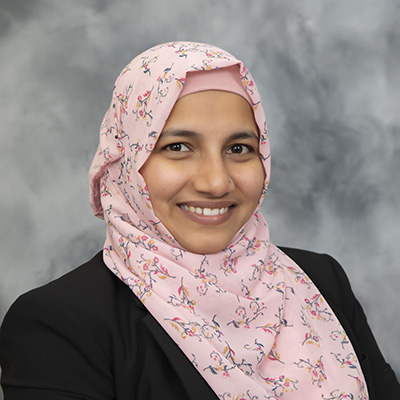
Rizwana Begum
PhD
Post-doctoral Researchers and Program Coordinator
Department of Comparative Biomedical Sciences
Research Projects
Weishan Huang
LSU, School of Veterinary Medicine, Department of Pathobiological Science Link to pubmed publications
Project Title
Modulation of TCR signaling for sustainable CAR-T therapy
Funding Period
Pilot (June 7, 2022 - February 28, 2024)
Biosketch
Dr. Huang received a PhD degree in pharmacology and postdoctoral training in immunology at Cornell University. She was appointed assistant professor of immunology at LSU in 2018. Her research focuses on understanding the development and function of regulatory immunity and immune memory, with an overarching interest of developing T cell-based therapies against inflammation and cancer.
Abstract
Immunotherapy has shown the promise to cure cancer by infusing patients with tumor-specific anti-cancer immune cells, with demonstrated success of chimeric antigen receptor (CAR)-T cell therapy. CAR-T therapy has been successful in B cell (CD19+) malignancy, including acute and chronic lymphoblastic leukemia (ALL and CLL) and non-hodgkin's lymphoma. However, the cytotoxic and short-lived nature of CAR-T cells results in severe side effects of immunopathology and reduced the therapeutic values of this costly therapy. There is an urgent need of novel strategies for targeted immune modulation to elicit potent and persistent tumor-specific effector and memory T cell responses and minimize off-target toxicity. T cell development, function and homeostasis are regulated by T cell receptor (TCR) signals and cytokines and suggested to be proportional to TCR signal strength. However, very strong TCR activation and cytokine stimulation could lead to excessive cytotoxic T cell activation that can cause immunopathology while the anti-tumor immunity quickly exhausts. In this pilot program, Huang proposes to tune TCR downstream signaling in human CAR-T cells and to use pre-clinical mouse models to further develop strategies that can enable a more sustainable and less toxic CAR-T therapy.
Gianluca Veggiani
LSU, School of Veterinary Medicine, Department of Pathobiological Science Link to pubmed publications
Project Title
Development of universal immune receptors for rapid discovery of combinatorial CAR T cell therapy
Funding period
Pilot (January 1, 2024 - August 5, 2024)
Biosketch
Dr. Veggiani received a PhD degree in biochemistry from the University of Oxford, followed by a postdoctoral training in bioengineering at the University of Toronto. In 2023 he joined LSU as an assistant professor of immunopathogenesis. His research is dedicated to advancing innovative methodologies for understanding the molecular mechanisms underlying cancer and infectious diseases, with the goal of developing cutting-edge diagnostics, vaccines, antiviral treatments, and immunotherapies.
Abstract
My work on the pilot project with Cancer COBRE focuses on developing a novel platform for enhancing CAR T cell therapies in solid tumors. Specifically, we aim to create a universal immune receptor system, called CatchSTAR, which allows for the rapid and modular decoration of T cells with cancer-targeting ligands. This system leverages molecular superglue technology for stable and customizable targeting of multiple tumor antigens. Additionally, we are establishing a high-throughput screening platform using breast cancer organoids to evaluate the therapeutic potential of these engineered T cells, accelerating the discovery of effective treatments for solid tumors.
Constantine A. Simintiras
School of Animal Sciences, Agricultural Center, Louisiana State University link to pubmed publications
dr. simintiras faculty page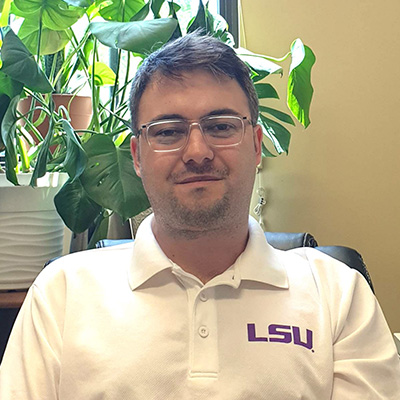
Project Title:
Untangling the drivers of endometrial hyperplasia in vitro
Funding Period:
Pilot (June 7, 2024 - February 28, 2025)
Biosketch:
Dr. Simintiras is an Assistant Professor in the School of Animal Sciences at Louisiana State University since March 2022. Prior to this, he completed two postdoctoral research fellowships: one at the University of Missouri under Dr. Tom Spencer (2019-2022) and another at University College Dublin with Dr. Pat Lonergan (2017-2019). Dr. Simintiras earned his Ph.D. from the Hull York Medical School, UK (2012-2016), and holds a Master’s in Biomedical Engineering from Imperial College London, UK (2010-2011), as well as a Bachelor’s degree in Biochemistry from The University of York, UK (2007-2010). His lab studies, among other things, the mechanisms underpinning cyclical endometrial regeneration in health and disease.
Abstract:
Dysregulated endometrial epithelial gland proliferation (hyperplasia) underpins 80% endometrial cancers – the fifth most prevalent cancer. Using a novel cell culture model of the endometrium (organoids), among other cutting-edge genomic, analytical, and bioinformatic tools, we will untangle the mechanisms driving endometrial hyperplasia. This is central to developing therapeutics for women with endometrial cancer.
Brent Stanfield
LSU, School of Veterinary Medicine, Department of Pathobiological Sciencelink to Pubmed publication
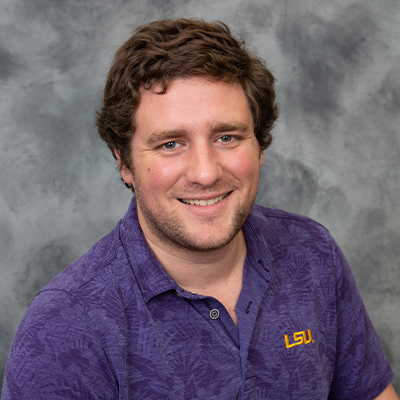
Project Title:
Experimental Infection of Guinea Pigs with GPHLV as a Model of KSHV Pathogenesis
Funding Period:
Pilot (June 7, 2024 - February 28, 2025)
Biosketch:
Brent A. Stanfield, Ph.D. is an Assistant Professor of Viral Oncology at Louisiana State University School of Veterinary Medicine. Dr. Stanfield's research focuses on developing immune-competent animal models of virus associated cancers. His work aims to address significant gaps in preclinical models for KSHV-associated malignancies. Leveraging cutting-edge genomic and immunological approaches, Dr. Stanfield's studies aim to accelerate the development of vaccines and therapeutics, fostering new strategies to combat virus-induced cancers.
Abstract:
Kaposi’s sarcoma-associated herpesvirus (KSHV) is a critical oncovirus that leads to significant morbidity, particularly in immunocompromised populations, through diseases such as Kaposi’s sarcoma (KS), multicentric Castleman’s disease (MCD), and primary effusion lymphoma (PEL). Progress in preclinical research for KSHV has been impeded by the absence of a suitable small animal model that faithfully recapitulates human pathogenesis. Murine models, such as those involving murine gammaherpesvirus 68 (MHV68), offer limited insight due to host-specific differences, while direct infection of non-human primates with KSHV present logistical and ethical challenges. Stanfield aims to develop and optimize a guinea pig model for KSHV pathogenesis. KSHV is only known to infect humans and primates. Through this work funded by the CPCCR, Stanfield has identified the guinea pig as a potential host for direct infection with KSHV. Given this unique finding, which enables the investigation of a host restricted pathogen in a small animal host, this research has transitioned from studying guinea pig herpes like virus (GPHLV) infection in the guinea pig to direct KSHV infection in guinea pigs. Ultimately, this work will establish the guinea pig as an immune-competent small animal model capable of supporting comprehensive KSHV research.
Cores
Molecular Biology and Immunopathology Core
The Molecular Biology and Immunopathology Core (MBIPC) and all 4 Center projects are located within the LSU SVM. MBIPC will be operationally headquartered within the existing administrative structure and laboratories of the Division of Biotechnology and Molecular Medicine (BioMMED). In addition, MBIPC will closely collaborate with the Center’s PCEC, also located within the SVM building. MBIPC will concentrate its support functions on molecular biology/recombinant DNA services and immunopathological characterization of in vitro and in vivo samples in conjunction with the SVM FACS Facility and the PBS Pathology Unit. Molecular biological services and reagents will include standard services such as DNA sequencing recombinant plasmid construction, cDNA library construction, and single cell DNA and RNA sequencing using the 10X genomics Chromium controller in conjunction with the Illumina Nextseq 550s/MiSeq sequencing equipment, for all 4 individual PJI’s projects. Advanced services will include processing and analysis of tissue/organ RNASeq experiments and single cell DNA and RNA sequencing data using advanced bioinformatics capabilities offered in conjunction with the Bioinformatics Unit of the LSU SVM LBRN/INBRE. In addition, MBIPC will offer real-time PCR analysis of mouse cytokines. The core has recently acquired the Agilent Seahorse XF platform which provides a direct measure of simultaneous measurements of OXPHOS and glycolytic rate, in live cells, in real-time. Using this technology, phenotypic evaluation of cancer cells in response to different metabolic substrates or inhibitors can be evaluated. Additional services include the production of monospecific and monoclonal antibodies, and coordination with the SVM Flow Cytometry Facility and the SVM Pathology Core offering advanced immunopathology and immunocytochemistry services. MBIPC has been established with strong experience in the application of advanced molecular and immunopathological expertise through coordinated access to existing SVM Facilities. New technological assays and methods will be adopted and/or developed over time based on individual project needs.
Key Core Personnel and Service

Konstantin "Gus" Kousoulas
PhD
Professor and Head of Department
Department of Pathobiological Sciences.

Vladimir Chouljenko
PhD
Associate Professor (Research)
Department of Pathobiological Sciences
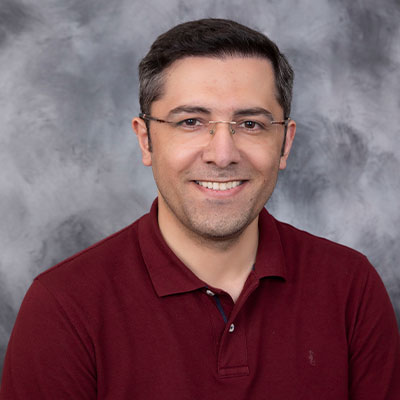
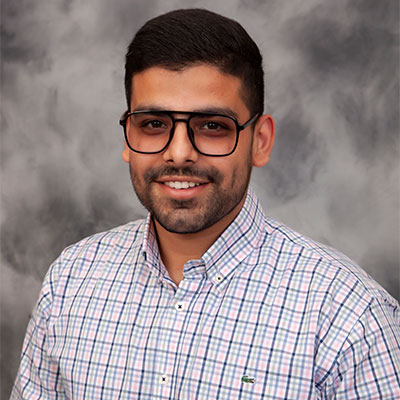
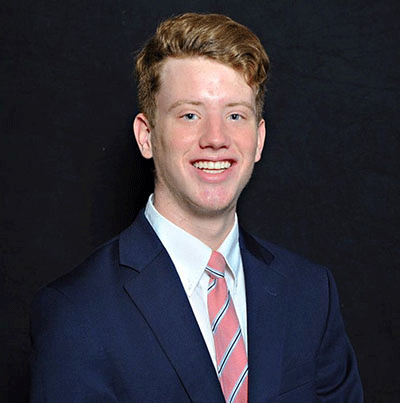
Dr. Konstantin Kousoulas, (Director) will oversee all aspects of the scientific core, but specifically the core will rely on his expertise in gene expression in Molecular Biology and Infectious Diseases, where he has more than 30 years of experience. Dr. Kousoulas Is currently teaching a graduate bioinformatics course in advanced Transcriptomics attended virtually by more than 40 graduate students and faculty. The Co-Director, Dr. Vladimir Chouljenko’s expertise in RNASeq data analysis involving mouse and human genomes is essential where he has more than 28 years’ experience in Sequencing and recombinant DNA techniques. Dr. Antonieta Guerrero Plata (FACS, Facility Director) has more than 20 years of immunology experience and will oversee all immunological aspects of the Core and will facilitate access to the SVM FACS facility that is under her direction. Dr. Ingeborg Langohr (board certified veterinary pathologist with more than 20 years of experience) will oversee and coordinate all pathological and immunopathological aspects of the work and facilitate access to the SVM Pathology and immune-histology cost center. Additional staff personnel include: Drs. Nithya Jambunathan and Muzammel Haque have more than 20 years of experience in molecular biology methodologies and gene expression patterns, as well as protein expression and purification, monoclonal and monospecific antibody production.
All BioMMED Core services are offered through a web-based date/time log sign on system (iLab), which is an effective set of tools for scheduling specific equipment, as well as ordering MBIPC services and supplies. All Cores enlisted in this COBRE are subsidized by SVM. They are required to generate only 20% of Core expenses. It is envisioned that services ordered through the Center’s MBIPC will be subsidized at a level of up to 50% by the Core, while remaining charges will be on individual projects PIs. Access to cost center services will be after review of the request by the Core leadership team and final approval by the AC. Additional information on these cores is listed below:
Gene Lab
GeneLab currently provides conventional and next generation sequencing (NGS) nucleic acid sequencing, recombinant DNA services (gene cloning, mutagenesis, and library construction), viral vector construction, quantitative PCR (qPCR) analysis, and reagents and supplies needed for biotechnology experiments. Research protocols and consultation for specific research projects are provided free of charge. The three qPCR machines located in GeneLab are utilized practically seven days per week (24/7). Training seminars and wet labs are provided by GeneLab staff to enable researchers to stay current in the rapidly changing field of molecular biology. MBIPC will work with the LBRN/INBRE and CEIDR-COBRE (Phase III-year 15)-funded GeneLab at SVM to provide Molecular Biology services to all Project and Pilot Project Leaders.
GeneLab NGS and Bioinformatics Services
GeneLab bioinformatics functions and services are provided in a strategic alliance with the LSU Center for Computation and Technology (CCT) and the Louisiana Biomedical Research Network (LBRN) supported by an IDeA INBRE grant (P30 GM110760). This cross-utilization of manpower and funding sources provides significant capabilities. GeneLab’s infrastructure is composed of hardware and software tools and pipelines (Table 1). The GeneLab-Bioinformatics Unit operates three high-end workstations. The two visualization servers support windows, as well as Linux environments, providing memory intensive visualization tasks and tools working on both OS environments. A computational server is equipped with large memory (128 GB) and large number of cores (32), is networked to the Ion PGM and Ion Proton platforms for dealing with analyses requiring large memory footprint and multi-core performance applications. These three high-end servers are backed with network-connected expandable NAS storage system, resulting in total storage space of 200 Terabytes at this time, which are directly connected to the servers and software tools integrated to the sequencing platforms. An important aspect of our hardware and software infrastructure is that these computer storage systems are supported by the campus-wide high-performance computing (HPC) facilities managed by LSU’s Center for Computation & Technology (CCT). This also includes large HPC clusters operated by Louisiana Optical Network Initiative (http://www.loni.org). The computing infrastructure provided by CCT consists of a few computing clusters and independent computing, application and database servers all connected to a high-speed campus network. Battery backup, fault monitoring, data snapshots, site-distinct mirroring, and off-site backups, are part of our comprehensive backup/recovery strategy and are all in place. Additionally, GeneLab provides access to the IBM Power8 Delta Cluster with a Configuration of total 16 compute nodes with 10-core 3.42 GHz Power8 processors, where 14 nodes are “thin” nodes with 256 GB memory and 2 are “fat” nodes with I TB RAM each. 1/2 Petabyte storage space, with IBM’s state-of-the-art GPFS (General Parallel File System). Workflow pipelines can be created from existing software for Bioinformatics, Structural Modeling, and other analysis tasks using IBM’s SAC (Spectrum Application Center). SAC provides graphical user interface to create graph based customized workflow pipelines to users. This web-based real-time dashboard also provides for monitoring global workloads and resources, including resource usage reporting. Delta allocation can request through Delta webpage (https://delta.cct.lsu.edu) by creating a Delta account. It supports big data analytics software such as Hadoop natively (fully optimized). Jobs can be submitted via a graphical Internet portal from anywhere on the LSU Campus.
NGS Services
Of particular interest to all COBRE investigators are GeneLab’s NGS support services in close collaboration with the LBRN Biocomputation, Biostatistics and Bioinformatics Core (BBBC) and the LSU Center for Computation and Technology (CCT). GeneLab is co-supported by the LBRN and CEIDR for molecular cell biology, NGS services and bioinformatics services providing a reliable connection between the actual NGS experiments and the analysis of the NGS data. GeneLab’s NGS and bioinformatics support services became official on July 1, 2013, with the installation and training of personnel for the operation of two Ion Proton and Quant Studio Flex equipment to assist researchers at all stages of research, from experimental design to data generation and analysis. GeneLab has added the Illumina based Miseq and NextSeq sequencers in the summer of 2019. The Illumina MiSeq system is a next-generation, benchtop sequencer with a simple workflow, enabling researchers to move from sample to data in as little as eight hours. Capable of generating up to 15 Gb per run, the MiSeq system is the only next generation sequencer that integrates amplification, sequencing, and data analysis in a single instrument with a footprint of less than two square feet. GeneLab has also acquired an Illumina NextSeq 550 System. This sequencing system is the only desktop next-generation sequencing (NGS) system capable of sequencing a 30× human genome in a single run. Two flow cell formats and multiple reagent configurations enable 20–120 Gb of data output in a single run, providing flexibility across the broadest range of applications and study sizes. Additionally, Genelab has recently acquired the 10X Genomics Chromium Single Cell controller which will detect cell-to-cell gene expression variability and identify rare cell types in heterogeneous samples. Single-cell sequencing is a method that examines the genomes or transcriptomes of individual cells, providing a high-resolution view of cell-to-cell variation. Highly sensitive RNA sequencing (RNA-Seq) methods enable researchers to assess the individual contributions of single cells in complex tissues by profiling the transcriptome. The 10X Genomics Chromium Single Cell sequencing libraries have been best validated in the Illumina – NextSeq. The close alignment of GeneLab’s NGS capabilities and LSU CCTs bioinformatics capabilities provides an integrated approach to experimental design and quick analysis of the project data, while creating a unique forum for cross-training biologists and computer scientists in NGS methodologies and bioinformatics. Under this proposed Cancer COBRE, the expanded MBIPC Genelab will also focus on single cell trascriptomics and providing support for CRISPR/cas9 applications in conjunction with the PCEC. A variety of NGS equipment is currently available in GeneLab including two Ion Torrent PGM, two Ion Proton machines, and Quant Studio Flex (digital PCR validation). In addition, GeneLab has a variety of equipment to support NGS including qPCR machines and QuantStudio Flex systems; Fragment Analyzer from Advanced analytics to validated and quantify nucleic acid samples for NGS sample preparation; an EpMotion robotic arm for high throughput set-up and sampling; various computers and other equipment enabling quality control of nucleic acid samples; and preparing nucleic acid extractions from many samples at once. A visualization server supports Windows as well as Linux environments, providing memory intensive visualization tasks and tools working on both OS environments. A computational server equipped with large memory (128 GB) and large number of cores (32) is networked to the Ion PGM and Ion Proton platforms for dealing with analyses requiring large memory footprint and multi-core performance applications. These two high-end servers are backed with network-connected expandable NAS storage systems, resulting in total storage space of over 200 Terabytes at this time, which are directly connected to the servers and software tools integrated to the sequencing platforms. LSU-CCT staff work closely with GeneLab to transfer and analyze data and perform downstream custom-made bioinformatics analysis for individual projects (see below).
Single cell sequencing
A significant expansion of GeneLab research support has been achieved by launching single cell transcriptomic analysis. A major consideration for selection is the Chromium Single Cell Gene Expression Solution which provides a comprehensive, scalable solution for cell characterization and gene expression profiling of hundreds to tens of thousands of cells. It couples with the Illumina sequencers that GeneLab is going to acquire. The addition of the Single-Cell Isolator significantly expands our research capability at a minimal cost and builds on already existing expertise and equipment. The data analysis options provide sensitive and unbiased characterization of gene expression and is user-friendly. Single cell sequencing facilitates to: 1) Identify and characterize rare cell types; 2) Analyze and understand cellular heterogeneity and how this contributes to your biological system; 3) Perform cellular phenotyping with single cell RNA-seq to identify novel targets, biomarkers, and cell types and states without the need for pre-selected targets; 4) Evaluate mRNA and cell surface protein expression profiles within the same cell; 5) Perform high throughput and high resolution functional genetic; 6) Assess comprehensive gene expression phenotypes for individual CRISPR perturbations.
Pre-Clinical Evaluation Core
The Pre-Clinical Evaluation Core (PCEC) primarily serves as a centralized resource center for assessment of cancer disease mechanisms and cancer models that are studied by the individual PJI projects. The Core has been designed with focused experience in 3D cancer cell culture systems, including isolation and propagation of human cancer cell lines and normal human cell lines, extracellular matrix scaffold utilization and evaluation, and characterization of tumor spheroids. Expertise in genetic modification, gene expression and protein levels, and standard assays for cell signaling, apoptosis, drug screens, toxicology, immunological analysis, pathological evaluation, and imaging. The Core will be in Room 2202 on the second floor of the LSU SVM, near the office of the core Director and Associate Directors and near the labs of the PI/Director and Co-I of the Cancer COBRE. Core usage to support other NIH-funded projects will facilitate cancer animal model analysis as well as other disease models and underscores focused development and characterization of tumor spheroids to characterize factors critical for different stages of tumor development and progression. PCEC will work with core users to develop specific project based pre-Clinical models. Standardized techniques will ensure systematic assessment for each cell system such as 3D imaging of spheroid structure, differentiation state, cell proliferation, stability, viability, and functional assays (eg, enzyme or signaling). Visualization of spheroid structural organization by high content imaging (Cytation 5) and confocal microscopy, along with immunohistochemistry and pathological evaluation, will be available through coordination with the MBIPC. Measurement of cytokine/chemokines and ECM production will be assessed by ELISA or Western Blot analysis. RNA and protein lysates will be isolated from spheroids for gene expression and protein level analysis. RNAseq studies will be coordinated with the MBIPC. Expertise in genetic manipulation, eg, targeted CRISPR/Cas9 or siRNA knockdown of specific genes, in spheroids (plus or minus ECM or inhibitors) will be available for the core users for tumorigenesis disease mechanism and target discovery and validation.
Key Core Personnel and Service

Joseph Francis
Principal Investigator and Center Director
Professor
Department of Comparative Biomedical Sciences

Rizwana Begum
PhD
Post-doctoral Researchers and Program Coordinator
Department of Comparative Biomedical Sciences

Naveen Chintala
PhD
Post-doctoral Researchers
Department of Comparative Biomedical Sciences
Core Resources
The PCEC will be housed in Room 2202 centrally located on the 2nd floor of the LSU
SVM. The core space will be newly renovated (see Alternation and Renovation section
for more details). The core will comprise a total of 519 square-feet, divided into
two outer rooms designated for cellular and molecular instrumentation and with an
inner room designated for culturing of human cell lines, 3D spheroid cultures and
CRISPR/Cas9 studies. The cell culture room will contain one biosafety cabinet and
will contain four CO2 incubators. The room will be equipped with a sink and bench
space for two microcentrifuges, light phase microscope, a refrigerated Eppendorf tabletop
centrifuge, microcentrifuge, heat blocks, water baths, vortexer, and orbital shaker.
A refrigerator will store media and reagents. The outer instrumentation rooms will
contain a biosafety cabinet to be used for mouse tissue processing or other cell culture
manipulations. The outer room of the core facility will primarily be used for performance
of standard molecular and cellular biology assays, such as ELISAs, enzyme assays,
PCR, gel electroporation, and Western Blot analysis. The Biotek Cytation5 instrument
will be in the first outer PCEC room, which will provide PJIs and investigators with
the ability to perform advanced pre-clinical studies such as high throughput screening
capability for identifying drugs and antibodies, high content imaging, toxicological
and viability analysis, cell proliferation studies, fluorescence-based assay development,
target identification analysis, signaling, and kinetics studies. Dr. Subramanian,
Associate Director of the PCEC, will oversee the Cytation 5 usage and training of
PJIs and investigators. The second outer room of the PCEC will house the 6-nozzle
3D bioprinter (purchased in year 2). In year 1, a 3- nozzle 3D bioprinter located
in the LSU SVM 3D. Printing Lab will be available for use by the PJIs. The 6-nozzle
3D bioprinter will greatly enhance the 3D culture capability by expanding the number
of cell types and co-factors that can be bioprinted into the 3D spheroid cultures.
Two research technicians will assist the PJIs with specialized tissue and cell culture
techniques, isolation of RNA for RNAseq studies, preparation of protein lysates for
protein function analysis, RT-PCR and ELISA analysis of human gene expression (eg,
cytokines), CRISPR/Cas9, and siRNA knockdown studies and will be available to perform
daily activities in the core. The PJIs will always have access to the core facility
and can perform studies in the core rooms. One -20oC and two -80oC freezers will be
housed in the PCEC. Data will be stored both electronically in a secure database and
in accessible notebooks.
Standard Operating Procedures will be available for all experiments and procedures.
Stocks of human cell lines (normal and cancer), serum, antibodies, nutrients, and
other reagents will be stored in the PCEC for use by the PJIs.
Core Personnel

Joseph Francis
Principal Investigator and Center Director
Professor
Department of Comparative Biomedical Sciences
dr. francis faculty page

Konstantin "Gus" Kousoulas
Co- Investigator and Associate Director
Professor and Head of Department
Department of Pathobiological Sciences
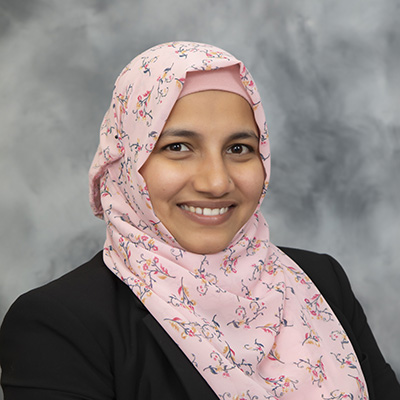
Rizwana Begum
PhD
Post-doctoral Researchers and Program Coordinator
Department of Comparative Biomedical Sciences

Joseph Francis
Principal Investigator and Center Director
Professor
Department of Comparative Biomedical Sciences

Rizwana Begum
PhD
Post-doctoral Researchers and Program Coordinator
Department of Comparative Biomedical Sciences

Naveen Chintala
PhD
Post-doctoral Researchers
Department of Comparative Biomedical Sciences

Konstantin "Gus" Kousoulas
PhD
Professor and Head of Department
Department of Pathobiological Sciences.

Vladimir Chouljenko
PhD
Associate Professor (Research)
Department of Pathobiological Sciences




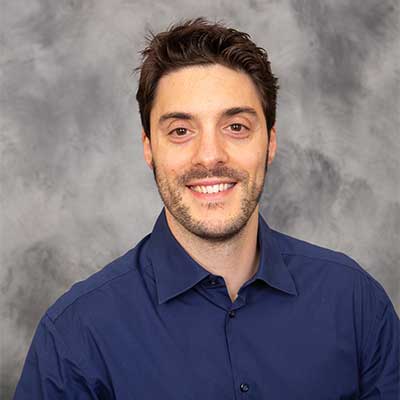
Gianluca Veggiani
Assistant Professor
Development of universal immune receptors for rapid discovery of combinatorial CAR T cell therapy
Department of Pathobiological Sciences
LSU School of Veterinary Medicine

Shang Su
Assistant Professor of Cancer Biology
Deciphering Prostate Cancer Cell Dormancy Drivers
Department of Comparative Biomedical Sciences
LSU School of Veterinary Medicine
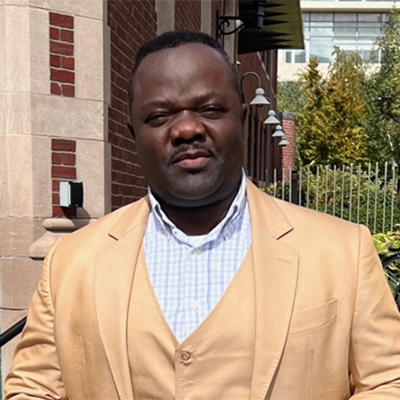
Jean Christopher Chamcheu
Assistant Professor
Department of Pathobiological Science, School of Veterinary Medicine,
Louisiana State University and Southern University collaboration
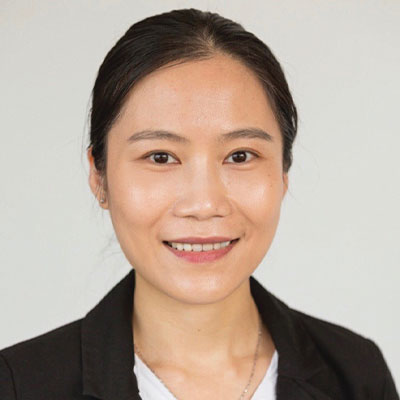
Weishan Huang
Associate Professor
Modulation of TCR signaling for sustainable CAR-T therapy
Department of Pathobiological Sciences
LSU School of Veterinary Medicine

Gianluca Veggiani
Assistant Professor
Development of universal immune receptors for rapid discovery of combinatorial CAR T cell therapy
Department of Pathobiological Sciences
LSU School of Veterinary Medicine

Constantine A. Simintiras
Assistant Professor
Untangling the drivers of endometrial hyperplasia in vitro
School of Animal Sciences, Agricultural Center, Louisiana State University

Brent Stanfield
Assistant Professor of Viral Oncology
Experimental Infection of Guinea Pigs with GPHLV as a Model of KSHV Pathogenesis
Department of Pathobiological Sciences
LSU School of Veterinary Medicine



Resources
NIH Acknowledgement
So that we can most effectively communicate the scope and results of our funding support, we would like to know when you are planning news announcements about IDeA awards or program activities and achievements…
When you produce such material, please be sure to identify the IDeA program, not just the INBRE, COBRE or sub-program, and to provide context about the program’s goals along the lines of:
The University of _________ has received $XXX from the National Institutes of Health (NIH) to support an Institutional Development Award (IDeA) Center of Biomedical Research Excellence. The IDeA program builds research capacities in states that historically have had low levels of NIH funding by supporting basic, clinical and translational research; faculty development; and infrastructure improvements.
In journal articles, news releases, or other materials about your program’s activities or achievements, please use funding acknowledgement language such as:
Research reported in this {publication, release} was supported by an Institutional Development Award (IDeA) from the National Institute of General Medical Sciences of the National Institutes of Health under grant number P2O GM135000-02
NIH Links
National Cancer Institute
NIH Electronic Research Administration
NIH Grants
- NIH Guide Notices
- Maximizing Investigators' Research Award (MIRA) (R35)
- NIH Research Project Grant Program (R01)
- NIH Exploratory/Developmental Research Grant Award (R21)
- PHS 398 Instructions and Forms
- Office of Extramural Research
- Guide for Grants and Contracts
- Grant Policy and Guidance
- Policy Statement
- Regional Seminars on Grants Administration
NIH Grant Related
- Office for Human Research Protections
- Human Subject Education Certification - Requirements
- All existing Assurances and Registered IRBs
- OHRP Federal Wide Assurances (FWA) for HS Research
- Office for Human Research Protections
- Definition of Children
- Investigator
- OER Human Subjects Web Site
- FAQ for the Requirement for Education on the Protection of Human Subjects
Vertebrate Animal Welfare
Career Development
About REDCap
REDCap (REsearch Data Capture) is an application that allows users to build and manage
online surveys and databases quickly and securely. LSU (LBRN) is a member of the consortium
and hosts REDCap on LSU/LBRN servers. For REDCap documentation, videos, more information
see: Project REDCap
Using LBRN REDCap
See the following application form to apply for access.
CPCCR PIs and Cores: Contact the LBRN computer manager directly.
